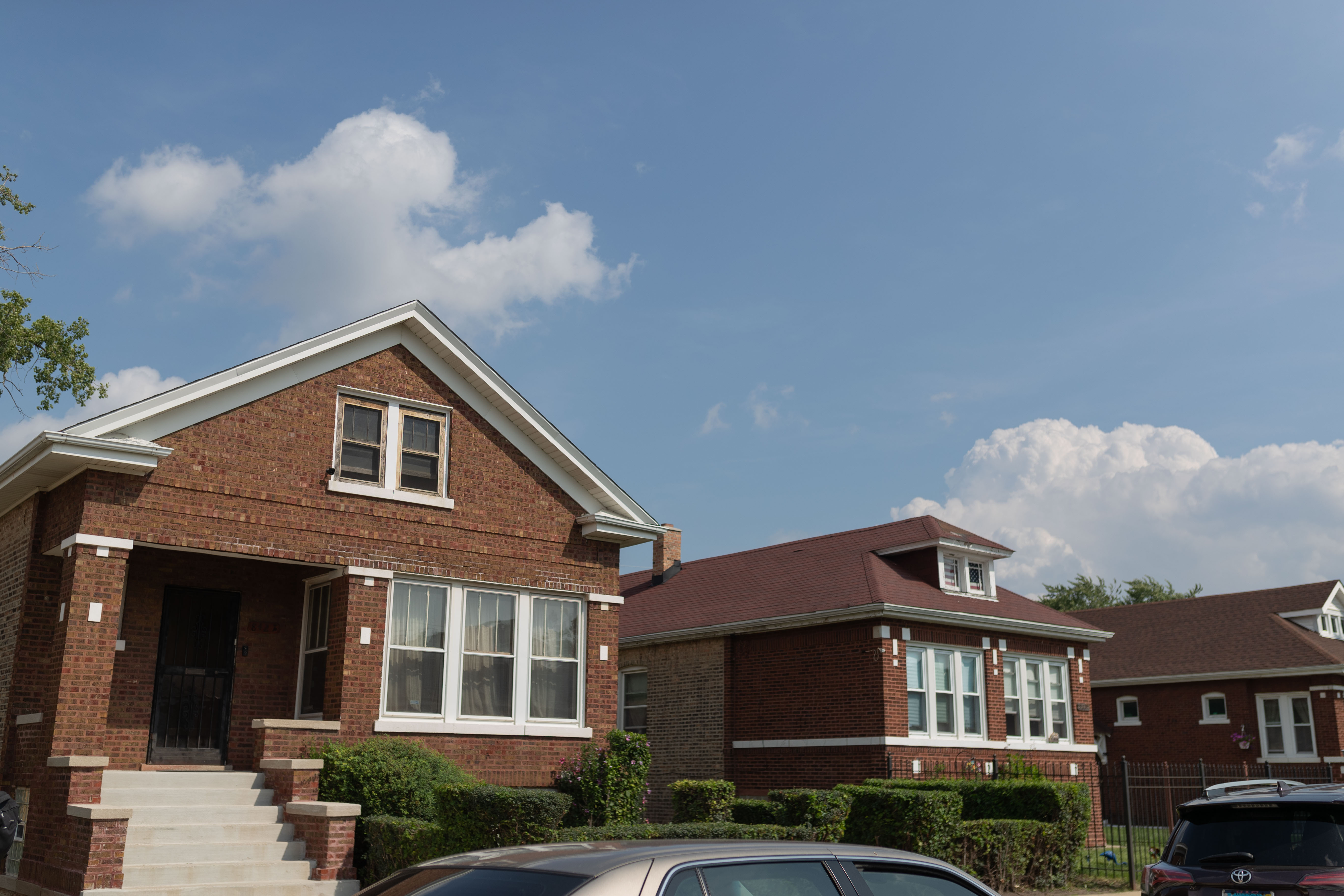Editor’s note: This story is part of a series of “What’s That Building?” stories this summer that focus on Chicago’s most iconic buildings.
In some parts of Chicago, you can walk for blocks and blocks looking at rows of Chicago bungalows, which are as much an icon of Chicago architecture as the more imposing downtown buildings we’ve covered in this series.
Walk along the 8300 to 8500 blocks of South May Street in Auburn Gresham and you’ll spot many of the varieties. Red brick, yellow brick, brown brick. Flat facades and octagon facades. Front entrance or side entrance. Bungalows that have been updated subtly, with their additions tucked toward the back so they don’t interrupt the historical streetscape. Bungalows that aren’t so subtle, with big, second-story additions known as pop tops, or with fake-boulder permastone applied to the exterior so it looks like a Flintstones house.
These couple blocks are a small stretch of Chicago’s Bungalow Belt, a giant C-shaped swath of the city that curves from West Rogers Park on the Far North Side, out along the West Side and back near the Indiana State Line in South Chicago. Those areas are where Chicago was growing fast in the first decades of the 20th century and tens of thousands of bungalows were built to house the surging population.
According to the Chicago Bungalow Association, there are about 80,000 bungalows in that belt, which make up almost one out of every three houses in Chicago.

The Chicago bungalow is a specific thing, designed in the 1910s and 1920s to house the middle class in handsome, nicely detailed shelter. But our bungalow is a derivative of something earlier.
The British colonizers of India described their houses, which had long, low roofs and overhangs for shade, with several words that eventually morphed into “bungalow.” Later, seaside houses with heat-beating porches and overhangs in England and New England were called bungalows, and after that, southern California’s late 19th-century population boom spawned an Arts & Crafts-style bungalow with big eaves and porches for cooling the interior and handcrafted details such as tile inside.
8433 S. May St.
We’re focusing on one particularly strong example of a bungalow. The style jumped to Chicago in the 1910s, when home builders could barely keep up with the fast growth of the city’s population as it attracted workers from everywhere to its countless factories. Between 1900 and 1930, Chicago’s population approximately doubled, growing from about 1.69 million people to 3.37 million.

Those residents had to live somewhere, and while apartment buildings were one place for them, in Chicago there was a pronounced fondness for houses, according to Elaine Lewinnek’s book The Working Man’s Reward. Chicago embraced single-family homeownership right from the early days after the 1871 fire, when wealthy elites saw barracks-like temporary housing for the displaced as a potential cesspool of sex and disease. Lewinnek also writes that because a large share of Chicago’s immigrants were from Germany, whose culture saw owning land as a virtue, single-family houses with yards were the most desired housing.
The bungalow worked because it could be replicated again and again, with enough changes in materials and decorative elements to keep them from looking too uniform.
One key departure from the typical Arts & Crafts bungalows in California — which opened wide across the front — was that the Chicago bungalow was slender at the fore, slimmed down to fit a standard 25-by-125-foot lot. Combine that with the large number of them that were built, and you get these almost continuous streetscapes along some blocks, with the sills, windows and rooflines lined up but enough variation in the details to keep the scene from being monotonous.
“The unprecedented form of the Chicago bungalow created an entirely novel form of Chicago urbanism,” architecture historian Carla Bruni wrote in 2012 in a National Register of Historic Places nomination for another piece of the Bungalow Belt in Auburn Gresham.
The interior details, when they’re intact, can be so picturesque. There are stained glass windows, brick fireplaces flanked by bookcases, built-in chests in the dining room, vintage tile floors and other details.
In many bungalows, a lot of that got ripped out or covered up in the mid-20th century when those designs started to look old and unfashionable.
When Armrhad Johnson bought his bungalow in 2009, there was a lot intact, including the stained glass windows, fireplace and built-ins. The original hardwood floors had been covered for years with carpet. Removing that, he only had to restain the faded wood floors. He was lucky in another way: Nobody had painted over the original natural finish of the wood trim, so all he had to do was restain it.
There was updating to be done on the utilities. The previous owners, who were in the house for four decades, hadn’t updated the plumbing or electrical wiring. Much of those elements were “probably like it had been when it was original in 1921,” Johnson said.

Johnson told WBEZ’s Reset he expected to have most of the work done within a few weekends after he moved in in 2009, but 14 years later, “it’s still ongoing. There’s always a project you want to do.”
Dennis Rodkin is the residential real estate reporter for Crain’s Chicago Business and Reset’s “What’s That Building?” contributor. Follow him @Dennis_Rodkin.
K’Von Jackson is the freelance photojournalist for Reset’s “What’s That Building?” Follow him @true_chicago.



